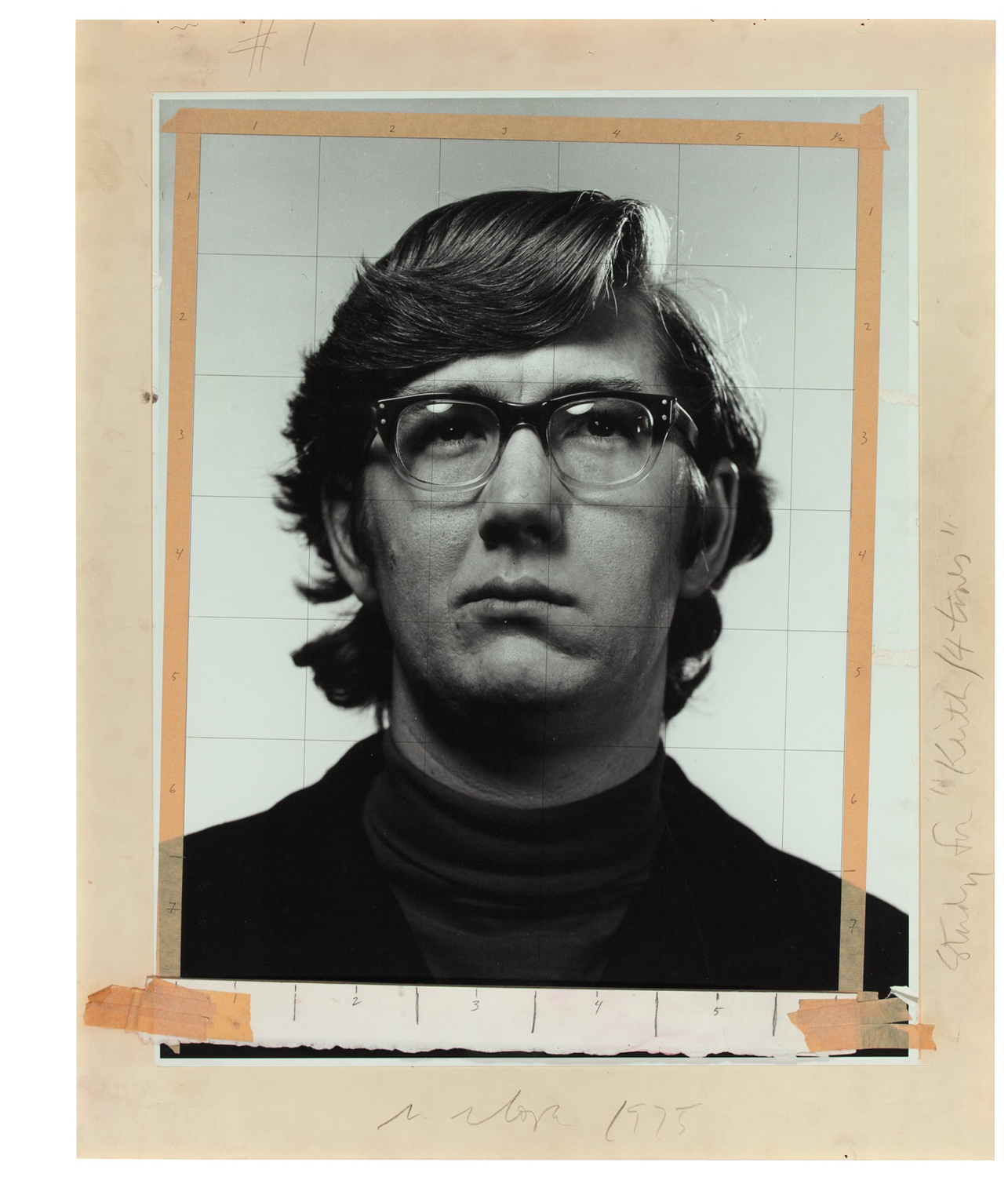The Real Maquettes
To make his monumental, photorealistic portraits, Chuck Close starts small: snapshots of his subjects, overlaid with a penciled-in grid, are scaled up, cell by cell, to their final grand size. For Close, the technique is as indispensible as the finished piece.
What of the original photographs, then, without which there would be no photorealism to achieve? “They’re a critical step,” says Kristy Bryce, the director of Eykyn Maclean Gallery in New York, “and his artwork is focused on the process of its making.”
“Chuck Close Photo Maquettes” at Eykyn Maclean New York is a career survey examining Close’s process, with maquettes (a term meaning small versions of a larger artwork) on display ranging from the 1970s to now. The images, which include portraits of composer Philip Glass and artist Elizabeth Murray, reveal Close’s consistent approach over the years. “He is keen about the fact that he doesn’t trace,” says artist and Yale art historian Jonathan Weinberg, who wrote the catalog’s introductory essay. “He looks at each little square, and makes a series of marks that depict whatever is in the tiny little square.”
The maquettes highlight a major paradox of Close’s oeuvre, Weinberg explains: Though Close focuses obsessively on people, he seems to snub their consciousnesses. Despite (or maybe, because of) the hyperbolic revelation of external details, a visage becomes a still life; the photographs themselves solidify human faces as mere objects. “He is not interested in psychological depth. It’s about the process of representation,” says Weinberg. “We have this intense desire to read faces, while in reality there is something very arbitrary about the way people look. And his work is about that to me… It’s not about recovering feelings.”
Adding to the meta element, photographs of the maquettes situated in Close’s studio will also be shown. “You can see how he worked from the maquette to the large-scale painting,” says Bryce. Close would tape the maquette on an easel, next to his canvas. Now, paint splatters, fingerprints, and notations superficially tarnish the works, hinting at their nonchalant studio use. Though few would assume his artworks are ill-planned, it is Close who feels the need to point out the chaos the maquettes seem to reveal. “You see the decisions that I made, where those lines fall,” he is quoted as saying in a press release. “And if someone were going to take a lot of time analyzing them, I think they would find that there’s a method in the madness.”
“CHUCK CLOSE PHOTO MAQUETTES” WILL BE AT EYKYN MACLEAN NEW YORK FROM APRIL 16 TO MAY 24.







